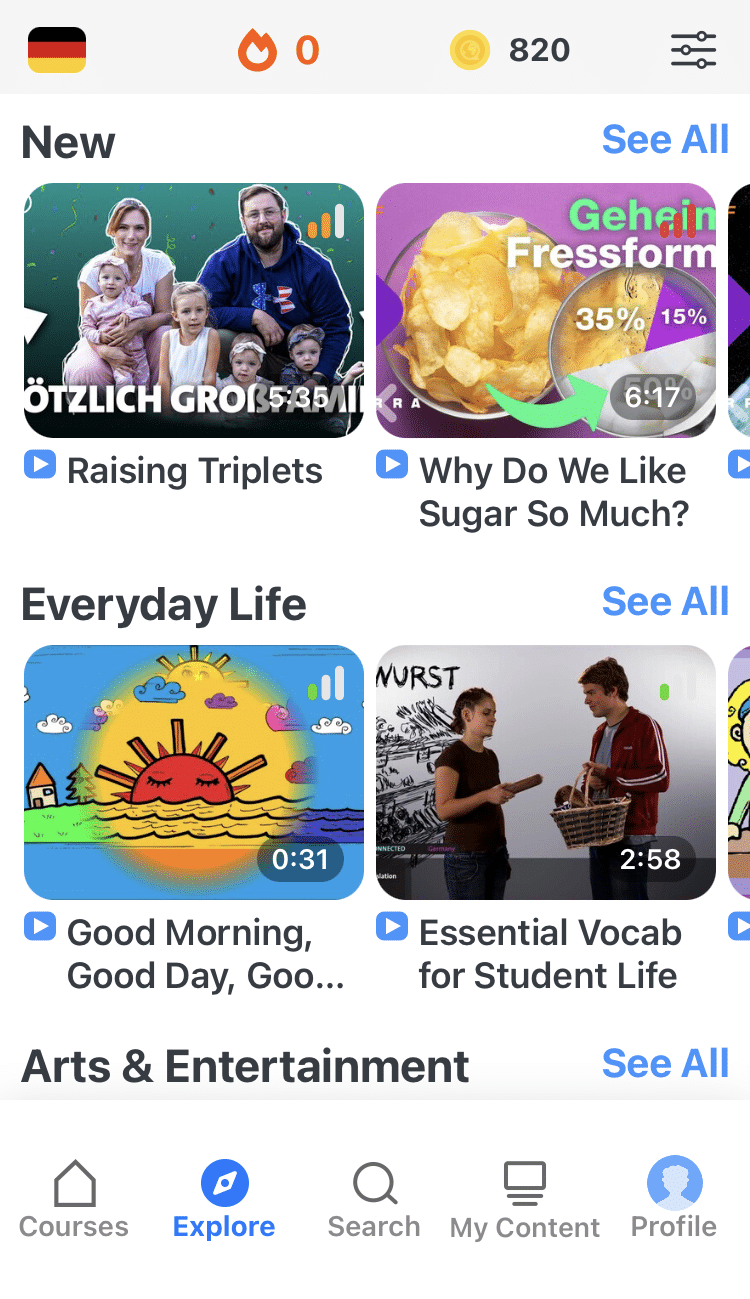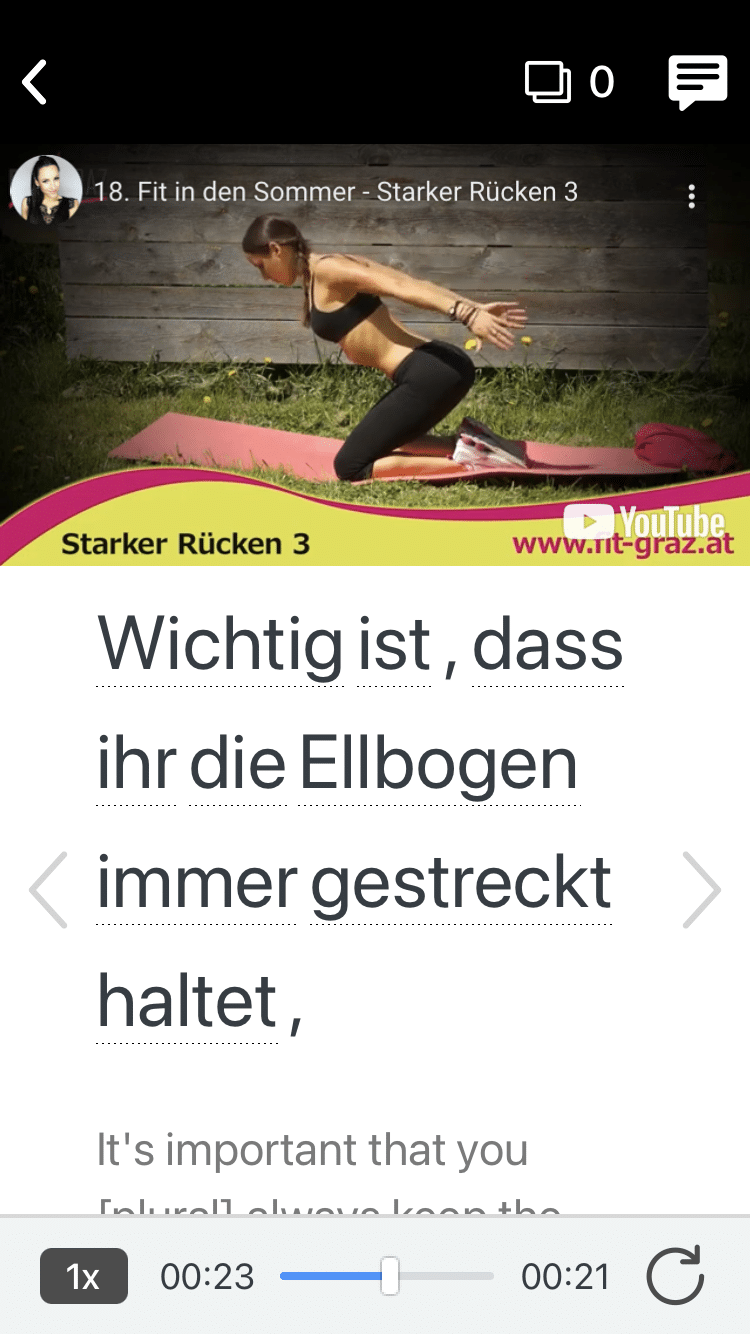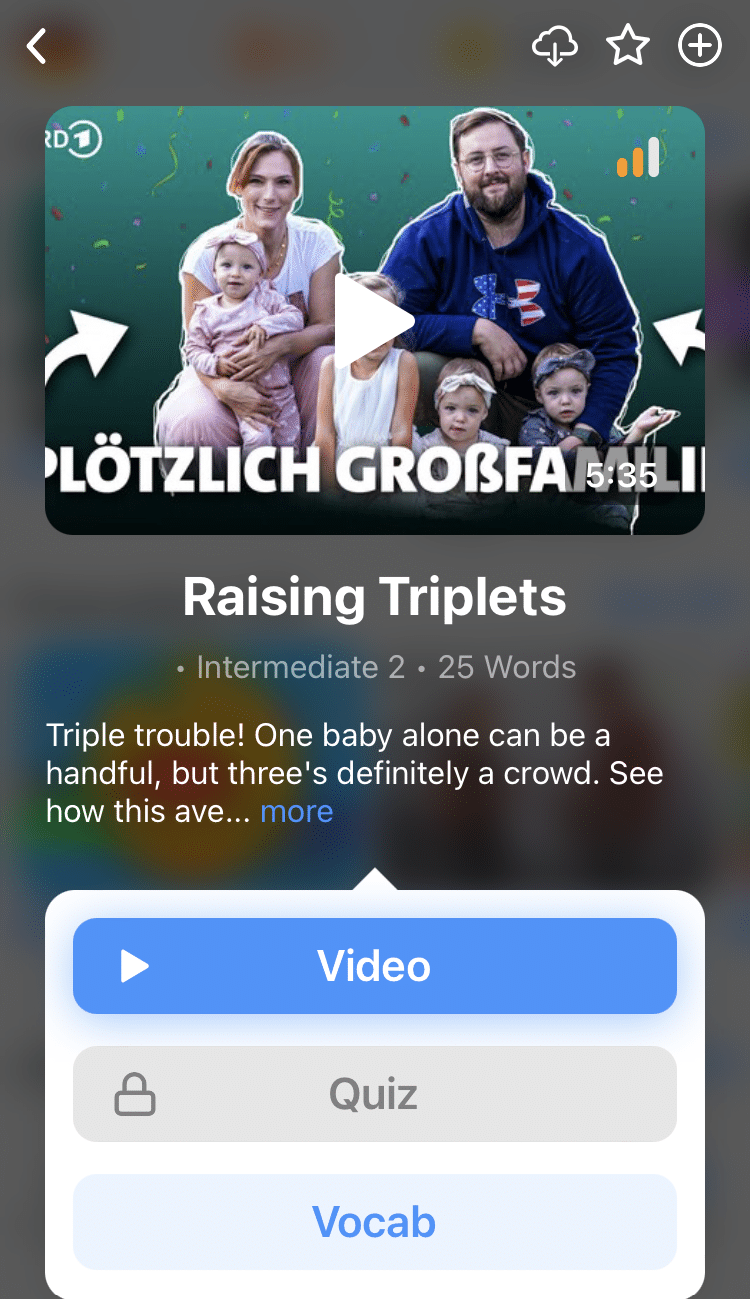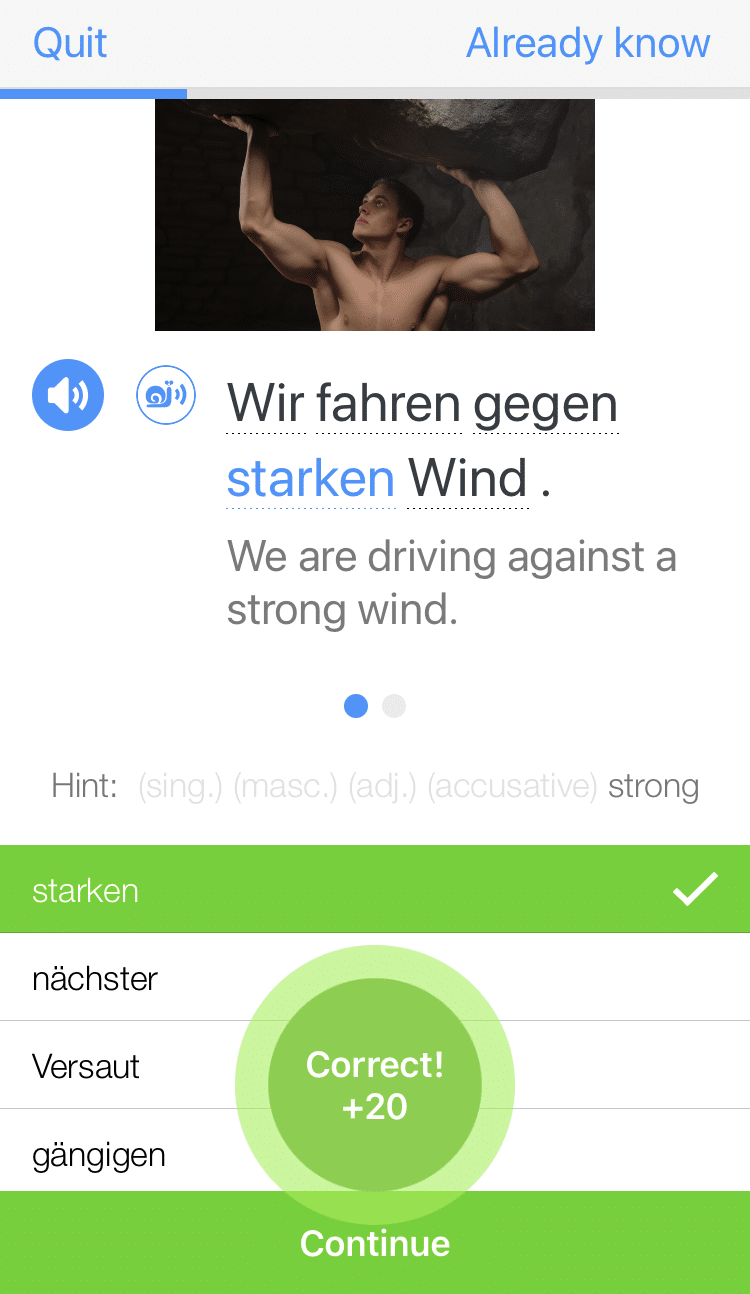
The German Subjunctive
Mastering the subjunctive is crucial to your understanding of the German language.
The subjunctive is generally used to express things that are not factual, and that have an element of uncertainty to them. There are two forms: Subjunctive I (Konjunktiv I) and Subjunctive II (Konjunktiv II).
In this guide, I’ll introduce you to what Subjunctive I and Subjunctive II are and how they work, with examples of how these rules are applied in German sentences.
So let’s crack on and integrate the subjunctive into your German study routine today!
Contents
- An Introduction to the German Subjunctive
- German Subjunctive II
- German Subjunctive I
- Best Ways to Learn the German Subjunctive
Download: This blog post is available as a convenient and portable PDF that you can take anywhere. Click here to get a copy. (Download)
An Introduction to the German Subjunctive
In German, the subjunctive is called the Konjunktiv and there are two of them. Subjunctive I and Subjunctive II.
Subjunctive I is used chiefly for reporting indirect speech and old-fashioned commands.
Subjunctive II is used to talk about hypothetical situations, express doubt over an idea or talk about things that are not certain.
Subjunctive II is by far the more commonly used of the two, and once you’ve cracked it, you’ll really be able to deepen your conversational skills. With the subjunctive, you can express your desires that—up until now—the indicative “I want” has made rude or boring.
German Subjunctive II
Almost 100% of the times you see the words “should,” “would” or “could,” you’ll be knee-deep in the subjunctive.
The Subjunctive II also helps us to soften requests. In fact, one of the first things you’ll have learned in German will have been how to order something in a restaurant. “I want” doesn’t get you there. But Ich möchte (I would like) or Ich hätte gerne (I would like to have), does very nicely.
These are both examples of Subjunctive II. They are expressions of desire, much like wishing, which is also used in the subjunctive mood.
Essentially, the subjunctive mood is used when there is an element of doubt or when something has not yet happened contained within the thought. Let’s have a look at some examples and work out how to form the Subjunctive II.
Rules and Application
Forming the Subjunctive II is much easier than you would think, and is done in two ways. One is the adaptation of the imperfect, and the other is with an auxiliary verb, werden (to become).
The most commonly used verbs used without the auxiliary are haben, sein and the modal verbs. In these cases, the verbs use the stem of their imperfect tense conjugation but gain an umlaut and an “-e” if needed. For example:
| Verb | Present | Imperfect | Subjunctive II |
| haben | habe | hatte | hätte |
| sein | bin | war | wäre |
| mögen | mag | mochte | möchte |
| dürfen | darf | durfte | dürfte |
| können | kann | konnte | könnte |
| müssen | muss | musste | müsste |
| wollen | will | wollte | wollte |
| sollen | soll | sollte | sollte |
So you see, it’s pretty straightforward. Of course, all verbs have a subjunctive form. And whether they’re irregular or regular, weak or strong, they are all formed from the stem of their imperfect conjugation.
You get the picture. But there’s a much, much easier way of getting a handle on Subjunctive II and it’s with the verb werden.
While those first eight verbs we conjugated above don’t use it, every other verb you can think of can be used in the subjunctive with werden; which I guess right now is looking like a pretty special verb. If you know the subjunctive form of werden, then you know the subjunctive form of every other verb (except for those top eight, don’t forget them).
Here it is:
| Pronoun | Conjugation |
| ich | würde |
| du | würdest |
| er/sie/es | würde |
| wir | würden |
| ihr | würdet |
| Sie/sie | würden |
All you have to do now is add the infinitive and you’ve got yourself a verb in Subjunctive II.
Examples
Wenn ich viel Geld hätte, würde ich eine Weltreise machen.
(If I had a lot of money, I would travel the world.)
Du würdest mich hier nicht alleine lassen, oder?
(You wouldn’t leave me alone here, would you?)
Nein, natürlich nicht, wir würden zusammen fliegen!
(No, not at all, we could fly together!)
Here we see the subjunctive mood being used firstly to express a desire dependent on a particular condition (having lots of money) as well as being used in a question that expresses a doubt or a negative (whether or not person B would be left by themselves).
And finally, the resolution is still in the subjunctive because the idea is still dependent on person A having enough money, which she doesn’t.
There is a great game to really nail this form of the subjunctive. In a group beginning with the idea “Wenn ich viel Geld hätte…,” one person goes on to create a scenario.
So using the example above (Wenn ich viel Geld hätte, würde ich eine Weltreise machen), the next person uses this scenario to continue the story:
Wenn ich eine Weltreise machen würde, müsste ich meinen Hund zu Hause lassen.
(If I traveled the world, I would have to leave my dog at home.)
And so on…
Wenn ich meinen Hund zu Hause lassen müsste, wäre ich ganz traurig.
(If I had to leave my dog at home, I would be very sad.)
Past Tense
The Subjunctive II only works in two tenses. The “non-past,” as displayed above, and the indeterminate past.
The reason these two are indeterminate is because of the unreal nature of the subjunctive. “If I had a lot of money I would travel the world” could relate to any time that has not yet occurred.
Similarly, the statement, “Had I worn warmer clothes, I wouldn’t have gotten sick” refers to a time in the past which is unreal. Using the past in Subjunctive II is a tad trickier, but nothing to cause any kind of breakdown.
Using sein and haben in their subjunctive form as the auxiliaries, we simply add the past participle of the verb we want to be expressed in the subjunctive and voila:
Wenn ich mich wärmer angezogen hätte, wäre ich nicht krank geworden.
(Had I worn warmer clothes, I wouldn’t have gotten sick.)
And that’s it.
German Subjunctive I
Subjunctive I is nowhere near as frequently used as Subjunctive II. Chiefly this mood is used in reported or indirect speech as a way of maintaining distance from the source.
You’ll also find it cropping up in older forms of instructional manuals, cookbooks and the like, as well as general sayings, such as “Es Lebe der König” (long live the king) and “Gott sei Dank” (thank God).
Rules and Application
Forming Subjunctive I is fairly straightforward. Whereas Subjunctive II is formed from the stem of its imperfect conjugation, here we use the present tense stem and then add the same endings.
Luckily for us, this applies to every verb save one, sein, which was always going to be doing something different, let’s face it.
Subjunctive I forms of machen, haben, leben and gehen:
| Pronoun | machen | haben | leben | gehen |
| ich | mache | habe | lebe | gehe |
| du | machest | habest | lebest | gehest |
| er/sie/es | mache | habe | lebe | gehe |
| wir | machen | haben | leben | gehen |
| ihr | machet | habet | lebet | gehet |
| Sie/sie | machen | haben | leben | gehen |
Subjunctive I form of sein:
| Pronoun | Conjugation |
| ich | sei |
| du | seist |
| er/sie/es | sei |
| wir | seien |
| ihr | seiet |
| Sie/sie | seien |
While this is a necessary skill to acquire if you’re looking to enhance your written German, I can’t stress enough how infrequently this mood is used outside of news reporting.
Practice by identifying it in online newspaper reports and in no time you’ll be able to differentiate by what a person did and what a person is said to have done–good, huh?
Tenses
Unlike Subjunctive II, which has only two, Subjunctive I has four tenses: present, past, future and future perfect. In these latter three, the rule is simple: The auxiliary verb is conjugated in Subjunctive I.
Present: Er sagte, er habe kein Interesse. (He said he isn’t interested.)
Past: Er sagte, er sei nicht gegangen. (He said he didn’t go.)
Future: Er sagte, er werde es morgen machen. (He said, he will do it tomorrow.)
Future Perfect: Er sagte, er werde sich vor Montag entschuldigt haben. (He said he will have apologized before Monday.)
So there we are. The key to talking about being human, to talking about all your dreams and wishes, as well as being able to talk about someone else’s dreams and wishes, is with the use of the German subjunctive mood. It may be a lot to take in, but the rewards of mastering it are huge.
Best Ways to Learn the German Subjunctive
Keep in mind that reading grammar rules on paper isn’t the same as recognizing the constructions when you hear them spoken. To get fluent in German conversation, you’ll need to be able to recognize the subjunctive when you hear it used.
You can get listening practice with German podcasts, but German videos are particularly great for helping you absorb the meaning of the subjunctive verb forms by seeing them used in context.
Visual cues (like facial expressions) in movies and TV shows will help illustrate how the subjunctive mood is affecting the intent of a sentence.
You can see this in action with a language learning program like FluentU.
FluentU is one of the best websites and apps for learning German the way native speakers really use it. FluentU takes real-world videos—like music videos, movie trailers, news and inspiring talks—and turns them into personalized language learning lessons.
Watch authentic media to simultaneously immerse yourself in the German language and build an understanding of the German culture.
By using real-life videos, the content is kept fresh and current. Topics cover a lot of ground as you can see here:

Vocabulary and phrases are learned with the help of interactive subtitles and full transcripts.

Hovering over or tapping on any word in the subtitles will automatically pause the video and instantly display its meaning. Interesting words you don’t know yet can be added to a to-learn list for later.

For every lesson, a list of vocabulary is provided for easy reference and bolstered with plenty of examples of how each word is used in a sentence.
Your existing knowledge is tested with the help of adaptive quizzes in which words are learned in context.

To keep things fresh, FluentU keeps track of the words you’re learning and recommends further lessons and videos based on what you've already studied.
This way, you have a truly personalized learning experience.
Start using the FluentU website on your computer or tablet or, better yet, download the FluentU app from the iTunes or Google Play store. Click here to take advantage of our current sale! (Expires at the end of this month.)
If you get familiar with how the subjunctive shows up in everyday German conversations and media, you unlock an important layer of the language’s meaning.
So ideally you’ll master it early on, so you can understand those subtleties when you hear them and also incorporate the subjunctive into your own speech and writing.
Good luck!
Download: This blog post is available as a convenient and portable PDF that you can take anywhere. Click here to get a copy. (Download)


